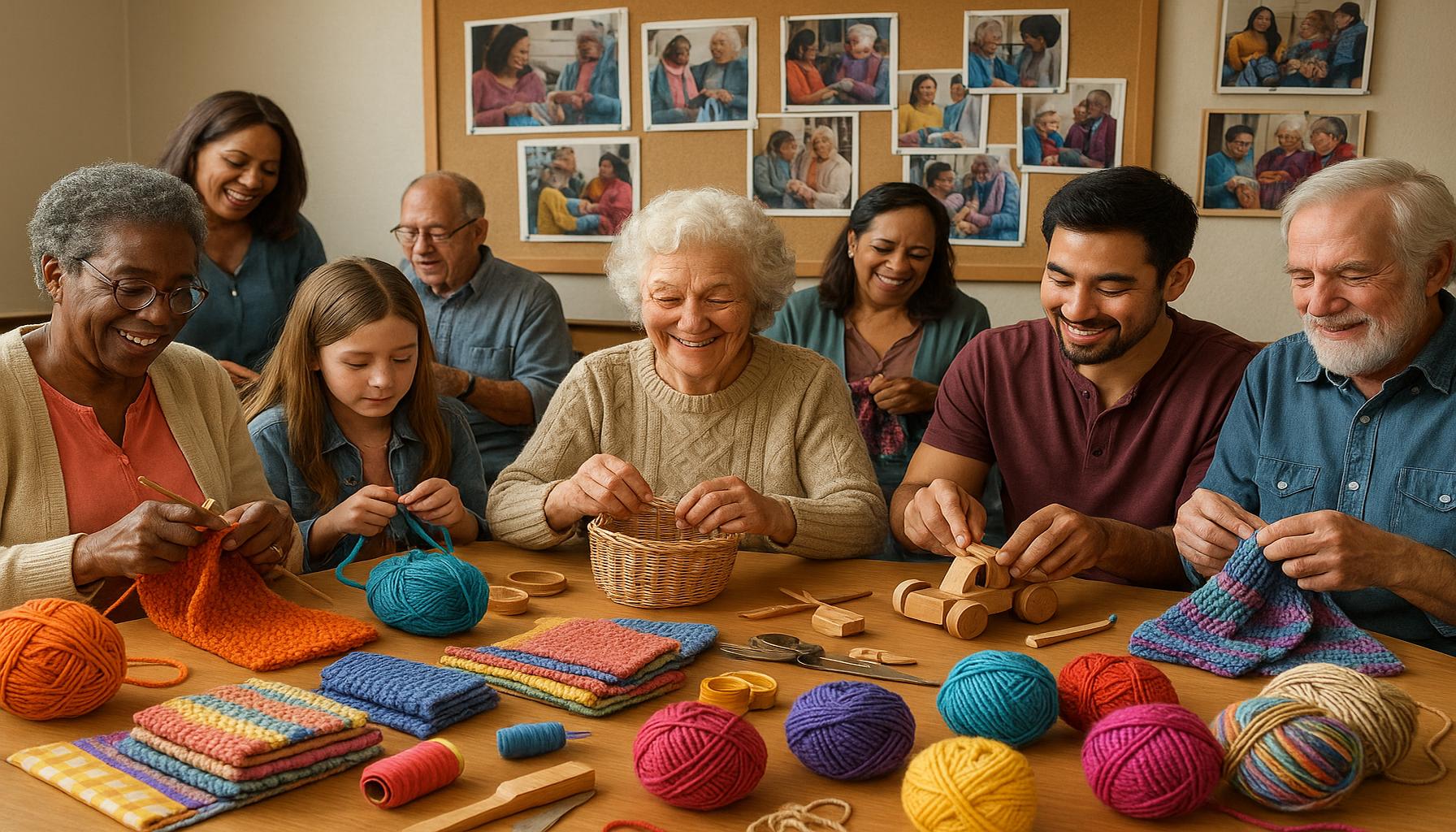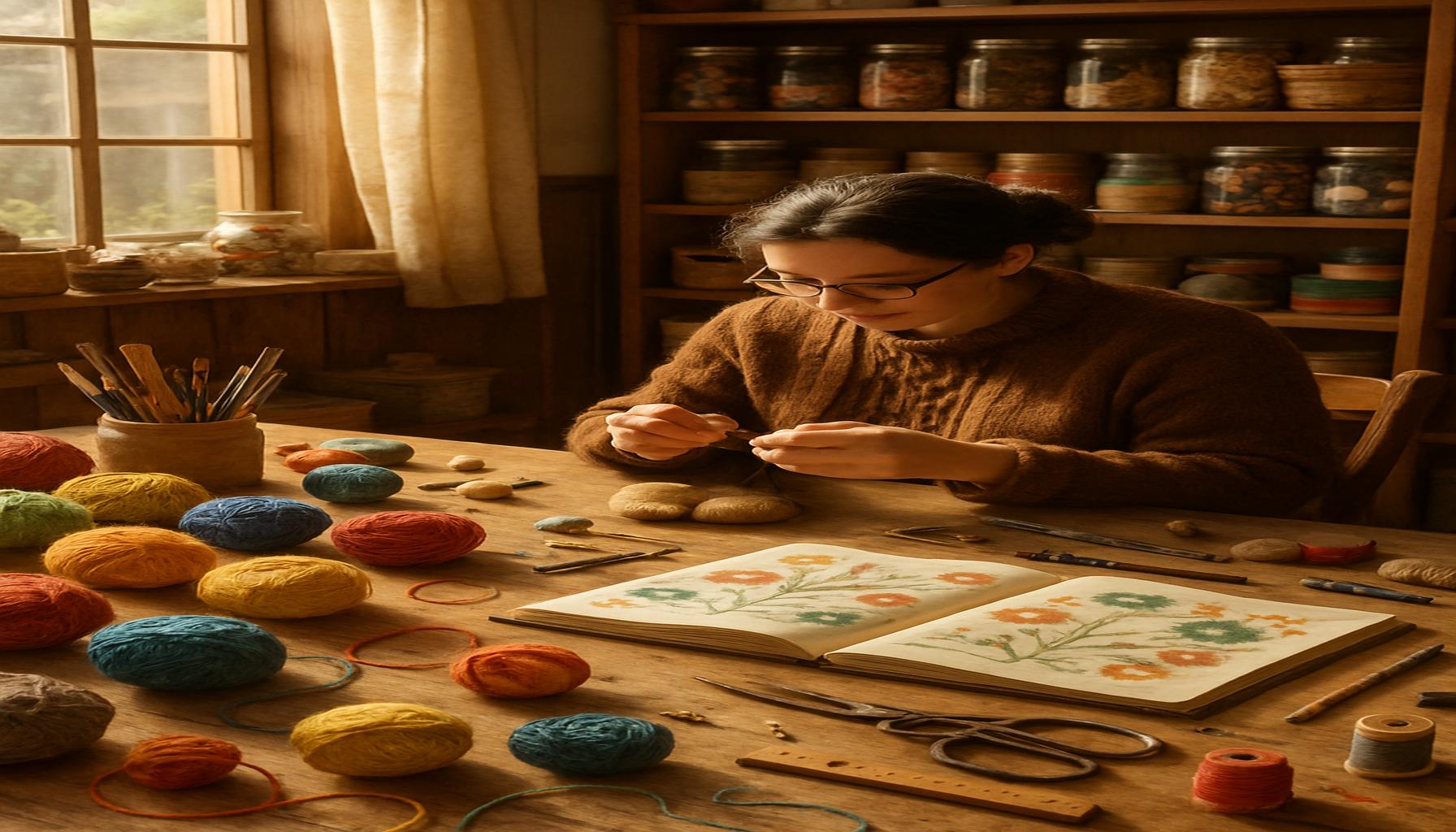Crafting for a Cause: How Handmade Goods Can Make a Difference in Your Community

The Unique Appeal of Handmade Goods
In a landscape heavily influenced by mass production and automation, handmade goods emerge as significant markers of human creativity and community spirit. These items not only possess a distinctive charm but also encapsulate the narratives of their creators. It’s through the art of crafting that individuals can express their creativity while simultaneously creating goods that resonate deeply with purpose and social responsibility.
The profound impact of handmade products goes beyond mere aesthetics. These goods offer tangible benefits to local economies, encourage meaningful awareness for various causes, and foster the personal development of their creators. Let’s delve deeper into each of these facets:
- Local Economies: By purchasing handmade items from local artisans, consumers are actively participating in keeping monetary resources within their community. For instance, when customers choose handcrafted soap from a local market instead of mass-produced options from a chain store, they support local jobs and initiatives. This helps to cultivate a robust local economy that provides a vibrant tapestry of goods and services.
- Awareness: Handmade crafts can serve as powerful vehicles for raising awareness about significant social causes. For example, a group of artists may come together to create unique pieces where proceeds directly contribute to environmental conservation or health initiatives. A notable instance is the handmade quilt project that raised funds for mental health awareness, providing not just a physical item but also sparking dialogue around mental health issues.
- Skill Development: Crafting is an inherently enriching process that encourages the development of various skills, both technical and soft. As individuals engage in creating handmade items, they often enhance their abilities in areas such as sewing, woodworking, or knitting. Beyond technical skills, crafting promotes patience, problem-solving, and collaboration, especially when individuals participate in community workshops or group projects.
Across the United States, numerous communities have embraced the movement of crafting for charitable causes. Initiatives exist where volunteers craft items like handmade jewelry, with proceeds directed towards breast cancer research, or knitted hats for children and adults experiencing homelessness. Such community-driven efforts highlight the extensive potential of crafting as a means of empowerment, fortifying the social fabric through collective action and shared goals.
This article will further explore how crafting for a cause can transcend traditional boundaries to become a force for positive change. We invite you to join us on this journey as we share inspiring stories of impactful crafting initiatives and offer practical insights on how you too can leverage your creativity to make a difference in your community.
DIVE DEEPER: Click here to uncover the healing benefits of creative writing
Empowering Communities Through Craft
The movement of crafting for a cause has gained remarkable traction across various communities, offering a compelling blend of personal empowerment and collective impact. By transforming creativity into action, individuals are discovering that their handmade creations can go beyond simple objects; they can become crucial tools for social change. In many cases, these crafting initiatives not only address immediate community needs but also stimulate long-term connections and inspiration.
One of the most notable aspects of crafting for a cause is the way it fosters community engagement. Local makers often organize workshops and gatherings that invite participation from diverse groups, uniting people of different backgrounds, ages, and skills. This inclusivity enhances the sense of belonging within a community and promotes interpersonal connections. For instance, a community center in Denver offers weekly knitting sessions, where participants create clothing items for those in need while enjoying each other’s company. By sharing experiences, these gatherings cultivate an environment of support and advocacy.
Case Studies in Crafting Impact
Let’s take a closer look at a few remarkable initiatives across the United States that exemplify how handmade goods can create a significant difference:
- Project Knitwell: This organization trains volunteers to bring knitting and crocheting to hospitals, providing comfort and therapeutic benefits to patients undergoing treatment. Each stitch serves as a reminder of hope, illustrating how simple crafting can contribute to healing and emotional support.
- Craft Hope: Tailored for disaster relief, Craft Hope connects artisans with opportunities to craft items for those affected by natural disasters. Whether it’s handmade blankets, clothing, or toys, these contributions offer comfort to those rebuilding their lives after devastation.
- Knots of Love: Based in California, this organization specializes in creating knitted caps for cancer patients undergoing chemotherapy. The act of donating handmade goods offers both comfort and warmth, sparking conversation about a disease that impacts many lives, while also raising funds through the sale of artistic yarns.
These initiatives not only provide physical support but also generate awareness around critical issues. By amplifying the messages of empathy and activism through their creations, artisans do more than just craft; they reshape perceptions and encourage community dialogue.
As these examples indicate, there is enormous potential in melding creativity with social responsibility. The act of crafting for a cause invites individuals to reflect on their abilities and empowers them to be a part of something greater than themselves. By understanding the importance of handmade goods, we not only embrace the value of local artisans but also harness the power to drive meaningful change within our communities.
| Advantages | Impact on Community |
|---|---|
| Promotes Local Artisans | Supports local economy and craftsmanship. |
| Fosters Community Connections | Encourages collaboration among residents. |
| Raises Awareness for Social Issues | Utilizes products to support causes. |
| Sustainable Practices | Encourages eco-friendly and ethical production. |
| Unique Products | Offers consumers one-of-a-kind items. |
Handmade goods not only capture the essence of artistry but also serve impactful social functions within communities. The movement towards supporting local artisans directly promotes the local economy, sustaining jobs and promoting craft heritage. This intertwines beautifully with the idea of fostering community connections, as local markets become a hub for collaboration, bringing people together. Alongside this, crafting initiatives often raise awareness for various social issues, whether it is supporting underprivileged groups or raising funds for charities through the sales of handmade items. Moreover, embracing sustainable practices within handmade goods showcases a commitment to environmental responsibility, appealing to the growing demand for eco-friendly products. Finally, these handcrafted items provide consumers with unique choices, setting them apart from mass-produced alternatives. This blend of creativity and purpose cultivates a positive ripple effect, encouraging individuals to actively participate in shaping a better community. The layers of this movement reveal just how deeply crafting for a cause can enrich lives and societies.
DISCOVER MORE: Click here to learn how technology is resh
Fostering Skills and Sustainability
Beyond promoting social connection, crafting for a cause facilitates skill development and sustainable practices within communities. Hands-on activities such as sewing, knitting, or woodworking not only provide a creative outlet but also equip participants with valuable skills that can enhance their employability or revive traditional crafts that may have been forgotten. Programs that educate individuals in these skills have the potential to create a more empowered workforce, particularly in underserved populations.
For example, the Stitching Change initiative in New York City teaches sewing and crafting techniques to young adults, many of whom have faced significant challenges in their lives. Participants learn to create handcrafted items while simultaneously gaining essential business skills, such as project management and marketing. This dual focus empowers them both artistically and financially. Not only do they contribute to meaningful causes through their creations, but they also build a foundation for future entrepreneurial opportunities.
The sustainability aspect of crafting for a cause cannot be overlooked. As environmental awareness grows, many organizations are embracing eco-friendly practices in both materials and production methods. For instance, Reclaimed Wood Project, based in Oregon, transforms discarded wood into beautiful handmade furniture and home décor, channeling proceeds toward environmental restoration efforts. By connecting sustainable lifestyles with craftsmanship, such initiatives not only benefit their immediate communities but also contribute to global environmental sustainability.
The Impact of Community Events and Markets
Community events and craft markets play a significant role in advancing the movement of crafting for a cause. These gatherings provide platforms for artisans to showcase their handmade goods, generate funds for specific causes, and draw attention to social issues through local outreach. The Handmade for Hope market in San Francisco gathers artists and crafters from varied backgrounds to present their work for charitable purposes. This eclectic event not only supports local artisans, but it also emphasizes the importance of collective action by directing proceeds to mental health charities, thereby addressing an urgent need in the community.
Hosting such events allows makers to share their stories and connect directly with consumers, educating them about the causes behind their crafts. Many consumers are increasingly interested in the social impact of their purchases and aim to buy from brands that prioritize ethics over profit. This shift in consumer behavior is evidenced by the rise of “shop local” movements, which encourage people to support local artisans and causes. Through these initiatives, handmade goods become interfaces for social change, significantly amplifying the impact of each sale.
In addition to marketplaces, workshops, and crafting events also serve as vital resources for promoting awareness and engagement around pressing issues. For example, initiatives such as Craftivist Collective encourage crafters to create pieces that address social justice themes, sparking conversations and acting as a form of peaceful protest. By connecting social issues with the act of crafting, these workshops foster critical thinking and inspire participants to be active contributors within their communities.
This multifaceted approach highlights crafting’s unique ability to unite individuals for a common purpose, empowering community members to make personal connections while effecting change. The potential for creating a ripple effect through local crafting initiatives remains vast, beckoning a deeper investigation into the relationship between creativity, community building, and societal progress.
DIVE DEEPER: Click here to discover the therapeutic benefits of crafting
Conclusion: Crafting a Better Future
In summary, crafting for a cause transcends the mere act of creating handmade goods; it embodies a movement aiming to uplift communities, promote sustainability, and foster social awareness. The impact of these initiatives is profound, from empowering individuals with new skills to addressing urgent social issues through artisan craftsmanship. As seen through programs like Stitching Change and Reclaimed Wood Project, the intersection of creativity and activism lays the groundwork for personal growth and environmental stewardship.
Moreover, community events and markets, such as Handmade for Hope, serve as vital conduits for connecting artisans with conscious consumers. Consumers today are increasingly seeking products that resonate with their values, making each purchase an opportunity to support local causes and artisans. By choosing handmade goods, individuals not only enrich their lives with unique items but also contribute to the broader narrative of social change and community resilience.
As we move forward, fostering this culture of crafting for a cause will require a collective acknowledgment of the powerful role that creativity plays in societal progress. Every stitch in a quilt, every carved piece of furniture, and every crafted item made with care symbolizes a larger purpose. By embracing this ethos, communities can weave together a brighter, more inclusive future that celebrates both innovation and compassion. Consider joining the movement—whether by engaging in local crafting events, supporting artisans, or spreading awareness of social issues through your own creative efforts. The journey of crafting for a cause not only transforms individual lives, but also stitches together the fabric of a more connected and caring society.


